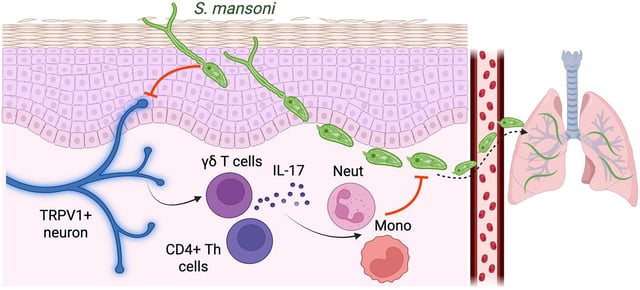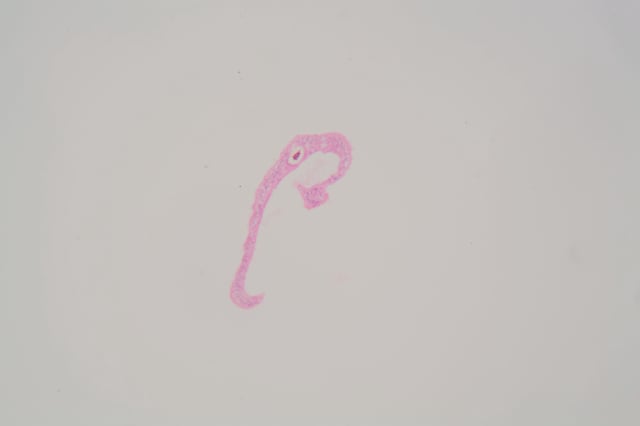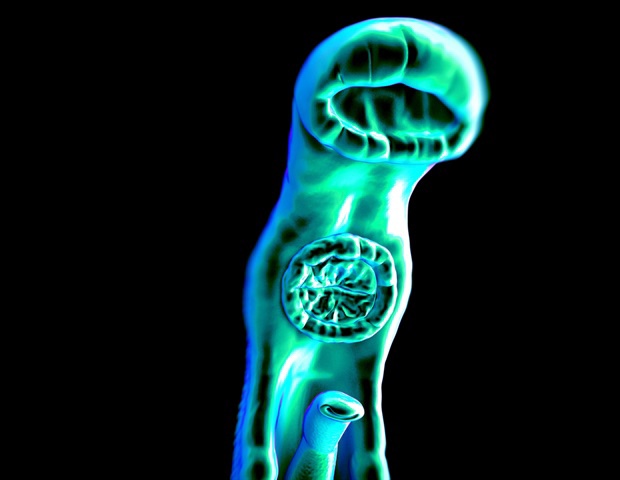Overview
- Mouse infection experiments show that S. mansoni suppresses TRPV1+ sensory neuron activity in skin, blocking pain and itch signals that normally trigger immune defenses.
- The study finds that TRPV1+ activation drives rapid recruitment of γδ T cells, monocytes and neutrophils to induce inflammation and resist larval penetration.
- Neuronal suppression by helminth factors uncovers a new mechanism of immune evasion explaining why schistosome larvae enter hosts painlessly.
- Next steps include pinpointing the secreted or surface‐associated molecules responsible for TRPV1+ blockade and mapping the specific immune cell and neuronal subsets involved.
- While still at the preclinical stage, these helminth‐derived factors may offer leads for non-opioid analgesics and topical preventive agents against schistosomiasis infection.


